
|
Astronomy Picture Of the Day (APOD)
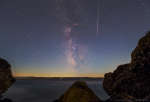 Perseid by the Sea
Perseid by the Sea
15.08.2017
Just after moonrise on August 12 this grain of cosmic sand fell by the sea, its momentary flash part of the annual Perseid Meteor Shower. To create the Perseid meteors, dust along the orbit of periodic comet Swift-Tuttle is swept up by planet Earth.
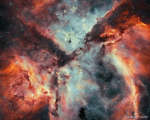 Stars, Gas, and Dust Battle in the Carina Nebula
Stars, Gas, and Dust Battle in the Carina Nebula
14.08.2017
Chaos reigns in the Carina Nebula where massive stars form and die. Striking and detailed, this close-up of a portion of the famous nebula is a combination of light emitted by hydrogen (shown in red) and oxygen (shown in blue).
 Charon Flyover from New Horizons
Charon Flyover from New Horizons
13.08.2017
What if you could fly over Pluto's moon Charon -- what might you see? The New Horizons spacecraft did just this in 2015 July as it zipped past Pluto and Charon with cameras blazing.
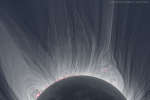 Detailed View of a Solar Eclipse Corona
Detailed View of a Solar Eclipse Corona
12.08.2017
Only in the fleeting darkness of a total solar eclipse is the light of the solar corona easily visible. Normally overwhelmed by the bright solar disk, the expansive corona, the sun's outer atmosphere, is an alluring sight.
 A Day in the Life of a Human Sundial
A Day in the Life of a Human Sundial
11.08.2017
Have you ever wanted to be a gnomon? Of course, a gnomon is the tall part of a sundial that casts a shadow. The gnomon's shadow moves as the Sun moves across the sky, indicating time by the shadow's position on the dial face.
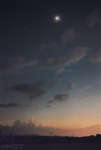 A Total Solar Eclipse of Saros 145
A Total Solar Eclipse of Saros 145
10.08.2017
A darkened sky holds bright planet Venus, the New Moon in silhouette, and the shimmering corona of the Sun in this image of a total solar eclipse. A composite of simultaneous telephoto and wide angle frames it was taken in the path of totality 18 years ago, August 11, 1999, near Kastamonu, Turkey.
 Night of the Perseids
Night of the Perseids
9.08.2017
This weekend, meteors will rain down near the peak of the annual Perseid Meteor Shower. Normally bright and colorful, the Perseid shower meteors are produced by dust swept up by planet Earth from the orbit of Comet Swift-Tuttle. They streak from a radiant in Perseus, above the horizon in clear predawn skies.
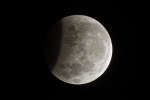 August Lunar Eclipse
August Lunar Eclipse
8.08.2017
August's Full Moon is framed in this sharp, high dynamic range composition. Captured before sunrise on August 8 from Sydney, Australia, south is up and the Earth's dark, umbral shadow is at the left, near the maximum phase of a partial lunar eclipse.
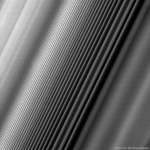 Density Waves in Saturns Rings from Cassini
Density Waves in Saturns Rings from Cassini
7.08.2017
What causes the patterns in Saturn's rings? The Cassini spacecraft, soon ending its 13 years orbiting Saturn, has sent back another spectacular image of Saturn's immense ring system in unprecedented detail. The physical cause for some of Saturn's ring structures is not always understood.
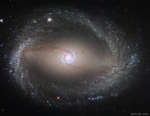 Spiral Galaxy NGC 1512: The Inner Ring
Spiral Galaxy NGC 1512: The Inner Ring
6.08.2017
Most galaxies don't have any rings -- why does this galaxy have two? To begin, the bright band near NGC 1512's center is a nuclear ring, a ring that surrounds the galaxy center and glows brightly with recently formed stars.
|
January February March April May June July August September October November December |
|||||||||||||||||||||||||||||||||||||||||||||||||